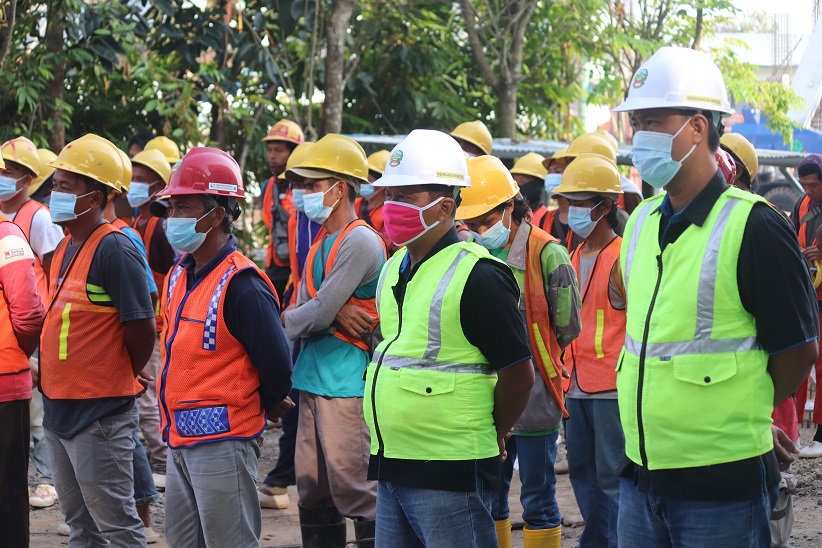
According to incoming Department of Public Works and Highways Secretary Manuel Bonoan, the incoming Marcos administration eyes on having Public Partnership (PPP) projects to attract more investors in the Philippines. This project is different from the Build, Build, Build a program that the outgoing administration had during its term.
Bonoan added that the incoming administration should also be selective on affordable, high-impact projects that can immediately contribute to the country’s economic recovery. The incoming Marcos admin did not say anything about abolishing the Build, Build, Build program, so it is more likely to continue alongside PPP projects.
Before the Marcos admin, President Benigno Aquino III utilized PPP projects for infrastructure projects in the Philippines. Some of these projects include the Daang Hari-South Luzon Link, School Infrastructure Project Phase 1 and 2, Ninoy Aquino International Airport Expressway, and modernization of the Orthopedic Center.
So, what exactly are PPP projects?
What are PPP projects?

A PPP project is an agreement between the government and a private company to finance, design, build, operate, and maintain infrastructure facilities and services the government used to take care of. It makes sure that each party takes on the right amount of risk so that costs are kept to a minimum while project goals are met.
Local governments with limited funding resources will highly benefit from PPP projects which allow the allocation of funds to other projects. PPP projects highly emphasize value for Money, faster implementation, and possibly additional revenue generation. PPP projects distribute project risks to both the public and private sectors.
What infrastructure projects can fall under PPP?

Roads, railroads, ports, airports, transport systems, ICT systems/ facilities, agriculture, canals, irrigation, water supply, land reclamation, solid waste management, tourism facilities, education, health facilities, tourism estates, public markets, housing, government buildings, and climate change mitigation infrastructure projects can be under PPP.
What are the elements of PPP projects?
Every PPP project has a strategic model of procurement to keep funds in check. This strategic procurement breaks down where the budget will be spent on the projects. Of course, PPP projects should have a contractual agreement between the public and private sectors. Both sectors should have the same risks and resources as well.
Value for Money, outcome orientation and acceleration of infrastructure, and faster implementation are some of the elements of PPP projects. Depending on the project, the private sector can have low to high participation in the PPP project.
The spectrum of Private Sector Participation
Projects, where the government owns and operates the assets have the lowest private sector participation. These include utility, restructuring, corporatization and decentralization, civil works, and service contracts.
On the other hand, there are projects you can genuinely consider a private-public partnership. These projects include management and operating contracts, leases, concessions, Build-Operate-Transfer, Design-Build-Operate, and Joint Ventures Partial Divestiture of Public Assets.
Projects where the private sector owns and operates assets, have the highest participation from the private sector. These projects have complete divestiture.
What are the forms of PPP projects?
There are two forms of PPP projects. These are Availability and Concession-based PPPs. Availability PPP is a form wherein public authority contracts with the private sector to provide projects to the implementing agency for a given fee and a separate charge for usage for the public. The project should provide a public good service or product.
Availability PPP projects have no usage fees if ever the public uses these services. On the other hand, Concession PPP is when the government allows the private sector to construct, operate, and charge the public for using their infrastructure service. A fee or tariff regulated on the concession contract shall be charged to the public.
Types of PPP contractual arrangements

Here are the types of arrangements for PPP projects:
Build-and-transfer (BT)
During this contractual arrangement, the private sector finances, constructs, and turns ownership of the facility to the government after completion. On the other hand, the government compensates the proponent at the agreed amortization schedule.
Build-lease-and-transfer (BLT)
In this arrangement, the private sector constructs, turn over, and transfers the facility ownership after the cooperation or lease period while the public sector compensates for the facility’s lease at the agreed term and schedule.
Build-operate-and-transfer (BOT)
In this agreement, the private sector finances, constructs, operates, and maintains a facility for a fixed term. They can also collect fees to recover investments plus profit during the term. The public sector provides the franchise and regulation of activities.
Build-own-and-operate (BOO)
The private sector has the same responsibilities as BOT in this agreement. Still, the public sector has to provide authorization and assistance in securing approval of the contract. The public also has the option to possess the facility from the BOO operator.
Build-transfer-and-operate (BTO)
Under BTO, the private sector finances and constructs the projects on a turn-key basis and transfers the facility’s title after construction. The public sector owns the facility after commissioning.
Contract Add-and-operate (CAO)
Under CAO, the private sector adds to an existing facility. It operates for an agreed franchise period while the public sector collects rental payments under agreed terms and schedules.
Develop-operate-and-transfer (DOT)
The private sector builds and operates infrastructure in this agreement. After the end of the cooperation period, the private sector transfers the facility to the government.
Rehabilitate-operate-and-transfer (ROT)
In a ROT agreement, the private sector refurnishes, operates, and maintains the facility within a franchise period. The public sector provides franchise and regains the property’s title after the franchise period.
Rehabilitate-own-and-operate (ROO)
In a ROD, the private sector refurnishes and takes over the operated facility as long as there is no committed franchise violation. The government turns over the facility, provides franchises, and has the option to share in the income of the ROD facility.
Are PPPs good for the public?

PPP projects provide a wide range of advantages for the government but also benefit the public. For one, more infrastructure means that the public can use more facilities. These projects are also a sign that says that our taxes are not going to waste. As Filipino, we want to get our Money’s worth.
Speaking of getting our Money’s worth, a real estate property is one of the best investments you can have in this economy. If you are looking for a house and lot in a master-planned community, Camella provides a Mediterranean-inspired community with amenities and 24/7 security.

Check out our Properties in the Philippines
Check out our catalog of house and lot and condo for sale in the Philipines!


